Posté par Sébastien Bontemps, le 23 mars 2016;
- Date limite : 20 avril 2016
- Date et lieu : 19-20 mai 2016, Iasi, Roumanie
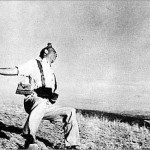 The Ethics of Photography (Iași, 19-20 May 16) Iași, Romania, May 19 – 20, 2016 Centrul de Fotografie Contemporana (Centre of Contemporary Photography) in Iasi (RO) is organizing the conference ‘’The Ethics of Photography and the Politics of the Image in Times of Crises’ in the framework of ‘CAMERA PLUS. Biennial of Contemporary Photography and Moving Image’. Venue: ‘Benjamin Fondane’ Hall at the French Institute, Iași (Romania). Argument: In the last years, striated by a multitude of crises — economical, political and cultural crises —, the photographic practices have created ethical tensions and they have been politicized out of a necessity to speculate the opportunity of transforming the reality. The financial, governmental and axiological objectivities came to be reconsidered by narrative . . . → En lire plus The Ethics of Photography (Iași, 19-20 May 16) Iași, Romania, May 19 – 20, 2016 Centrul de Fotografie Contemporana (Centre of Contemporary Photography) in Iasi (RO) is organizing the conference ‘’The Ethics of Photography and the Politics of the Image in Times of Crises’ in the framework of ‘CAMERA PLUS. Biennial of Contemporary Photography and Moving Image’. Venue: ‘Benjamin Fondane’ Hall at the French Institute, Iași (Romania). Argument: In the last years, striated by a multitude of crises — economical, political and cultural crises —, the photographic practices have created ethical tensions and they have been politicized out of a necessity to speculate the opportunity of transforming the reality. The financial, governmental and axiological objectivities came to be reconsidered by narrative . . . → En lire plus
Posté par Sébastien Bontemps, le 7 mars 2016;
- Date et lieu : 17-18 mars, Bibliothèque polonaise de Paris
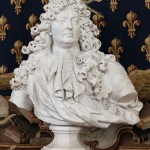 La représentation sculpturale du pouvoir : la France, l’Italie et leur rayonnement en Europe à l’époque moderne La représentation sculpturale du pouvoir : la France, l’Italie et leur rayonnement en Europe à l’époque moderne
Colloque international organisé par l École Pratique des Hautes Études et la Société Historique et Littéraire Polonaise
Sous le haut patronage de l’Ambassadeur de la République de Pologne les 17 et 18 mars 2016
Bibliothèque Polonaise de Paris
Dès l’Antiquité, la sculpture jouait toujours un rôle crucial dans la propagande du pouvoir et son importance augmenta encore depuis le début de la Renaissance. En France, au cours de l’époque moderne, la redécouverte puis l’étude de la sculpture héritée de l’Antiquité, portée par le pouvoir royal, ont donné lieu à l’élaboration progressive de formes que l’historiographie a qualifiée de classiques. Fruit du dialogue entre . . . → En lire plus
Posté par Sébastien Bontemps, le 4 mars 2016;
- Date limite : 1er avril 2016
- Date et lieu : 25-26 octobre 2016, Weimar
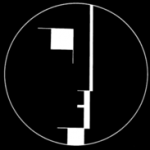 Dust & Data, Young Bauhaus Research Colloquium (Weimar, 25-26 Oct 16) Bauhaus-Universität Weimar, October 25 – 26, 2016 Deadline: Apr 1, 2016 The Young Bauhaus Research Colloquium, Dust and Data, hosted by the Bauhaus-Universität Weimar as part of the XIII. International Bauhaus Colloquium (25-29 October 2016), aims to reflect upon the most urgent theoretical, historical and political questions facing architecture today. Taking place in 2016, precisely forty years after its inauguration in the GDR, and just prior to the 100th anniversary of the Bauhaus, this conference will engage with Bauhaus history against the backdrop of the emergence of new historical methods, new modes of collection and technologies of interpretation, as well as problems of reconstruction and preservation that define the praxis . . . → En lire plus Dust & Data, Young Bauhaus Research Colloquium (Weimar, 25-26 Oct 16) Bauhaus-Universität Weimar, October 25 – 26, 2016 Deadline: Apr 1, 2016 The Young Bauhaus Research Colloquium, Dust and Data, hosted by the Bauhaus-Universität Weimar as part of the XIII. International Bauhaus Colloquium (25-29 October 2016), aims to reflect upon the most urgent theoretical, historical and political questions facing architecture today. Taking place in 2016, precisely forty years after its inauguration in the GDR, and just prior to the 100th anniversary of the Bauhaus, this conference will engage with Bauhaus history against the backdrop of the emergence of new historical methods, new modes of collection and technologies of interpretation, as well as problems of reconstruction and preservation that define the praxis . . . → En lire plus
Posté par Sébastien Bontemps, le 4 mars 2016;
- Date limite : 18 mars 2016
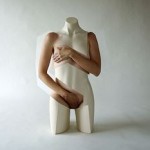 Kritische berichte Issue 4, 2016 Gender 2.0 New Ideas on “Gender” in the Arts and Cultural Studies Call for Papers Edited by Änne Söll and Linda Hentschel “Has gender become the latest currency on the neo-liberal market of opportunities?” one might ask, echoing the words of Anne Fleig. Has the term “gender” meanwhile forfeited its potential to advance the critical analysis of power relations? Or is it still in all its complexity a useful filter through which to critically review (and tackle) issues of gender attribution and the construction of identity? How are we facing up to the increasingly widespread “anti-genderism” (Sabine Hark)? What role does “gender” play in general today in research in the arts and in cultural studies? And . . . → En lire plus Kritische berichte Issue 4, 2016 Gender 2.0 New Ideas on “Gender” in the Arts and Cultural Studies Call for Papers Edited by Änne Söll and Linda Hentschel “Has gender become the latest currency on the neo-liberal market of opportunities?” one might ask, echoing the words of Anne Fleig. Has the term “gender” meanwhile forfeited its potential to advance the critical analysis of power relations? Or is it still in all its complexity a useful filter through which to critically review (and tackle) issues of gender attribution and the construction of identity? How are we facing up to the increasingly widespread “anti-genderism” (Sabine Hark)? What role does “gender” play in general today in research in the arts and in cultural studies? And . . . → En lire plus
Posté par Sébastien Bontemps, le 1 mars 2016;
- Date limite : 31 mai 2016
- Date et lieu : 1-2 décembre 2016, Université de Berne
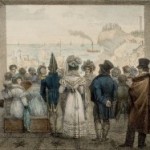 Seeing Through? The Materiality of Dioramas (Bern, 1-2 Dec 16) University of Bern, December 1 – 02, 2016 Deadline: May 31, 2016 Seeing Through? The Materiality of Dioramas (1560-2010) Dioramas are at the crossroads of artistic and scientific practices. They bring together artists, scientists, and collectors, thus providing an opportunity to reflect on the polyvalence of these actors and the definition of their expertise. In 1822, Louis Daguerre coined the term “diorama” when describing his theater. The word diorama means literally “seeing through.” In accordance with this etymology, dioramas embody a sense of transparency and life-likeness. In addition to providing theatrical and visual experiences, dioramas are multidimensional installations that incorporate paintings, objects, stuffed animals or mannequins. Habitat groups mixing taxidermy . . . → En lire plus Seeing Through? The Materiality of Dioramas (Bern, 1-2 Dec 16) University of Bern, December 1 – 02, 2016 Deadline: May 31, 2016 Seeing Through? The Materiality of Dioramas (1560-2010) Dioramas are at the crossroads of artistic and scientific practices. They bring together artists, scientists, and collectors, thus providing an opportunity to reflect on the polyvalence of these actors and the definition of their expertise. In 1822, Louis Daguerre coined the term “diorama” when describing his theater. The word diorama means literally “seeing through.” In accordance with this etymology, dioramas embody a sense of transparency and life-likeness. In addition to providing theatrical and visual experiences, dioramas are multidimensional installations that incorporate paintings, objects, stuffed animals or mannequins. Habitat groups mixing taxidermy . . . → En lire plus
Posté par Sébastien Bontemps, le 1 mars 2016;
- Date limite : 1er avril 2016
- Date et lieu : 14-16 juillet 2016, Berlin, Humboldt University
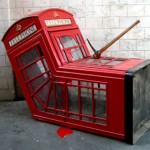 Urban Art: creating the urban with art (Berlin, 14-16 Jul 16) Humboldt University Berlin, July 14 – 16, 2016 Keynote: Prof. Dr. Frank Eckardt (Bauhaus-Universität Weimar) The conference deals with Urban Art, a new form of art and activism, that occurs in urban areas worldwide. First known under the label of « Street Art », the term has expanded to include diverse artistic and visual interventions in the exterior space. In contrast to the traditional term ‘public art’ Urban Art is very inclusive. Thus, it is both part of and reflective of current processes of global urbanization. The extremely heterogeneous manifestations of Urban Art range from large-scale wall paintings to tiny stickers, performative interventions to alternative forms of urban planning; they . . . → En lire plus Urban Art: creating the urban with art (Berlin, 14-16 Jul 16) Humboldt University Berlin, July 14 – 16, 2016 Keynote: Prof. Dr. Frank Eckardt (Bauhaus-Universität Weimar) The conference deals with Urban Art, a new form of art and activism, that occurs in urban areas worldwide. First known under the label of « Street Art », the term has expanded to include diverse artistic and visual interventions in the exterior space. In contrast to the traditional term ‘public art’ Urban Art is very inclusive. Thus, it is both part of and reflective of current processes of global urbanization. The extremely heterogeneous manifestations of Urban Art range from large-scale wall paintings to tiny stickers, performative interventions to alternative forms of urban planning; they . . . → En lire plus
Posté par Sébastien Bontemps, le 26 février 2016;
- Date limite : 29 avril 2016
- Date et lieu : 11-12 octobre 2016, Lisbonne
 Copies of Paintings in Portugal, Spain and the New World Lisbon, Fundação Gulbenkian, October 11 – 12, 2016 Deadline: Apr 29, 2016 Copies of Paintings in Portugal, Spain and the New World, 1552-1752. International Congress, Lisbon, Fundação Gulbenkian, October 11-12, 2016. For the Portuguese and Spanish versions, please scroll down. Organising Committee/ Comissão organizadora/ Comité organizador: Pedro Flor (Universidade Aberta de Lisboa), Susana Varela Flor (Universidade Nova de Lisboa), Luisa Elena Alcalá (Universidad Autónoma de Madrid), David García Cueto (Universidad de Granada) and Carla Mazzarelli (Università della Svizzera italiana).Sponsored by the Instituto de História da Arte, Faculdade de Ciências Sociais e Humanas da Universidade Nova de Lisboa, the Spanish National Research Project COPIMONARCH (I+D HAR2014-52061-P) at the Universidad de Granada, and . . . → En lire plus Copies of Paintings in Portugal, Spain and the New World Lisbon, Fundação Gulbenkian, October 11 – 12, 2016 Deadline: Apr 29, 2016 Copies of Paintings in Portugal, Spain and the New World, 1552-1752. International Congress, Lisbon, Fundação Gulbenkian, October 11-12, 2016. For the Portuguese and Spanish versions, please scroll down. Organising Committee/ Comissão organizadora/ Comité organizador: Pedro Flor (Universidade Aberta de Lisboa), Susana Varela Flor (Universidade Nova de Lisboa), Luisa Elena Alcalá (Universidad Autónoma de Madrid), David García Cueto (Universidad de Granada) and Carla Mazzarelli (Università della Svizzera italiana).Sponsored by the Instituto de História da Arte, Faculdade de Ciências Sociais e Humanas da Universidade Nova de Lisboa, the Spanish National Research Project COPIMONARCH (I+D HAR2014-52061-P) at the Universidad de Granada, and . . . → En lire plus
Posté par Sébastien Bontemps, le 26 février 2016;
- Date limite : 15 mars 2016
- Date et lieu : 18 juin 2016, Oxford University
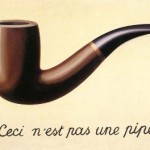 Image as Vortex (Oxford, 18 Jun 16) University of Oxford, June 18, 2016 Image as Vortex: An Interdisciplinary Conference on the Question of what an Image is by examining what it does. University of Oxford, June 18 2016. THE IMAGE IS NOT an idea. It is a radiant node or cluster; it is what I can, and must perforce, call a VORTEX, from which, and through which, and into which, ideas are constantly rushing. – Ezra Pound, Vorticism, 1914. It is hard to find a definition of what an image is. Most of those ‘definitions’ content themselves with saying what an image is not. It is not (merely) a symbol; it is not (merely) a form of language; it is . . . → En lire plus Image as Vortex (Oxford, 18 Jun 16) University of Oxford, June 18, 2016 Image as Vortex: An Interdisciplinary Conference on the Question of what an Image is by examining what it does. University of Oxford, June 18 2016. THE IMAGE IS NOT an idea. It is a radiant node or cluster; it is what I can, and must perforce, call a VORTEX, from which, and through which, and into which, ideas are constantly rushing. – Ezra Pound, Vorticism, 1914. It is hard to find a definition of what an image is. Most of those ‘definitions’ content themselves with saying what an image is not. It is not (merely) a symbol; it is not (merely) a form of language; it is . . . → En lire plus
Posté par Sébastien Bontemps, le 26 février 2016;
- Date limite : 30 avril 2016
- Date et lieu : 15 septembre 2016, Bologne
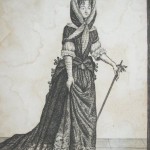 The Economy of Dress and Textiles (Bologna, 15 Sep 16) University of Bologna, Dipartimento di Storia Culture e Civiltà, San Giovanni in Monte, Bologna, Italy, September 15, 2016 The Economy of Dress and Textiles: Avenues of Trade, Production and Consumption in the Early Modern Period The cloth and textile market is of central importance to the late medieval and early modern economy. Trade routes, centres of production and patterns of consumption were determining factors that stimulated the influx of luxury cloth and textiles into established fashion and textile markets, while second-hand garments developed their own trajectory. Being sold at auctions and dealer shops, they sometimes enjoyed a second life and were often refashioned. The entire cost related to the fashioning of . . . → En lire plus The Economy of Dress and Textiles (Bologna, 15 Sep 16) University of Bologna, Dipartimento di Storia Culture e Civiltà, San Giovanni in Monte, Bologna, Italy, September 15, 2016 The Economy of Dress and Textiles: Avenues of Trade, Production and Consumption in the Early Modern Period The cloth and textile market is of central importance to the late medieval and early modern economy. Trade routes, centres of production and patterns of consumption were determining factors that stimulated the influx of luxury cloth and textiles into established fashion and textile markets, while second-hand garments developed their own trajectory. Being sold at auctions and dealer shops, they sometimes enjoyed a second life and were often refashioned. The entire cost related to the fashioning of . . . → En lire plus
Posté par Sébastien Bontemps, le 26 février 2016;
- Date limite : 6 mars 2016
- Date et lieu : 13 mai 2016, Université d'Anvers
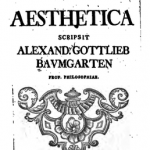 Dutch Association of Aesthetics Annual Conference (Antwerp, 13 May 16) Center for European Philosophy, University of Antwerp, May 13, 2016 Deadline: Mar 6, 2016 Dutch Association of Aesthetics Annual Conference: « Aesthetics is… » In 2016, the Dutch Association of Aesthetics celebrates the 20th anniversary of the decision to found it, which was made in Antwerp. On this special occasion, the annual conference will take place in Antwerp again, drawing attention to the founding question « What is Aesthetics? » Today, any inquiry into the nature of the discipline of aesthetics is inevitably confronted with two key problems. On the one hand, it must address those voices that defend, with renewed vigour, an empirical take on aesthetics. These empirical currents explicitly . . . → En lire plus Dutch Association of Aesthetics Annual Conference (Antwerp, 13 May 16) Center for European Philosophy, University of Antwerp, May 13, 2016 Deadline: Mar 6, 2016 Dutch Association of Aesthetics Annual Conference: « Aesthetics is… » In 2016, the Dutch Association of Aesthetics celebrates the 20th anniversary of the decision to found it, which was made in Antwerp. On this special occasion, the annual conference will take place in Antwerp again, drawing attention to the founding question « What is Aesthetics? » Today, any inquiry into the nature of the discipline of aesthetics is inevitably confronted with two key problems. On the one hand, it must address those voices that defend, with renewed vigour, an empirical take on aesthetics. These empirical currents explicitly . . . → En lire plus
Posté par Sébastien Bontemps, le 17 février 2016;
- Date limite : 15 mars 2016
- Date de prise de fonction : 1er juin 2016
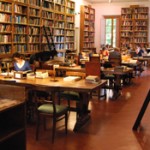 Postdoctoral Position (Project « Language(s) of Art History »), Florence Kunsthistorisches Institut in Florenz – Max-Planck-Institut Postdoctoral Position at the Kunsthistorisches Institut in Florenz – Max-Planck-Institut (Project « Language(s) of Art History ») The Kunsthistorisches Institut in Florenz – Max-Planck-Institut, Department of Professor Alessandro Nova, invites qualified candidates to apply for one postdoctoral position. Postdoctoral Position (Project « Language(s) of Art History »), Florence Kunsthistorisches Institut in Florenz – Max-Planck-Institut Postdoctoral Position at the Kunsthistorisches Institut in Florenz – Max-Planck-Institut (Project « Language(s) of Art History ») The Kunsthistorisches Institut in Florenz – Max-Planck-Institut, Department of Professor Alessandro Nova, invites qualified candidates to apply for one postdoctoral position.
Starting on 1 June 2016, the position is offered for two years. We are looking for outstanding candidates with passive German language skills, who are interested in the problem of how language shapes and limits intellectual discourse in art history (« Language(s) of Art History »). Candidates are asked to address their application in German, English or Italian, in a single pdf (max. 2 MB), via e-mail . . . → En lire plus
Posté par Sébastien Bontemps, le 13 février 2016;
- Date et lieu : 17 février 2016, Paris, INHA, Salle Vasari
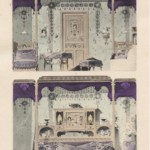 Penser le décor Penser le décor
De la Renaissance à nos jours
Séminaire ENS Cachan / EPHE – Saprat
Organisé par CLAIRE BRUNET (ENS Cachan), ÉLÉONORE CHALLINE (ENS Cachan) et MICHAËL DECROSSAS (SAPRAT / Institut national d’histoire de l’art)
Initié en 2014/2015, le séminaire « Penser le décor » [INHA/ ENS] a montré l’actualité des réflexions et recherches portant sur le décor, tant du côté de la communauté scientifi que que du public. Historiens d’art, historiens, spécialistes d’esthétique et conservateurs de musée ont pu nouer un dialogue fécond autour de la défi nition et de l’historiographie du décor, en s’intéressant particulièrement à la nature de son pouvoir et à ses fonctions. Si cette première session interrogeait son « retour » dans le . . . → En lire plus
Posté par Sébastien Bontemps, le 10 février 2016;
- Date limite : 24 mars 2016
- Date et lieu : 3-4 novembre 2016, Rome
 Textile Gifts in the Middle Ages – Objects, Actors, and Representations International Conference Organized by Christiane Elster, Stephanie Luther, Stefanie Seeberg and Tanja Michalsky As art history has given greater attention to material culture and its social contexts as a whole, the applied arts have also re-entered the scope of art historical discourse. Cultural-historical approaches, such as those employed in material culture studies, explore the objectness of artifacts and their efficacy. Related are studies of objects as mediums of symbolic communication, in which such objects are described and interpreted as part of complex performances of ritual and ceremony. Gifts of textiles in the Middle Ages provide a test field for the evaluation of such questions and approaches for the discipline of . . . → En lire plus Textile Gifts in the Middle Ages – Objects, Actors, and Representations International Conference Organized by Christiane Elster, Stephanie Luther, Stefanie Seeberg and Tanja Michalsky As art history has given greater attention to material culture and its social contexts as a whole, the applied arts have also re-entered the scope of art historical discourse. Cultural-historical approaches, such as those employed in material culture studies, explore the objectness of artifacts and their efficacy. Related are studies of objects as mediums of symbolic communication, in which such objects are described and interpreted as part of complex performances of ritual and ceremony. Gifts of textiles in the Middle Ages provide a test field for the evaluation of such questions and approaches for the discipline of . . . → En lire plus
Posté par Sébastien Bontemps, le 8 février 2016;
- Date limite : 30 mars 2016
- Date et lieu : 2-9 septembre 2016, University of York
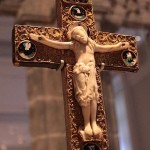 The Rood in Medieval Britain and Ireland c.900 – c.1500 (York, 2-9 Sep 16) University of York UK, September 2 – 03, 2016 Deadline: Mar 30, 2016 Keynote Speaker: Professor Richard Marks (University of Cambridge and University of York) The rood – understood as the cross itself, and/or the image of Christ crucified – was central to the visual and devotional culture of medieval Christianity. By the late middle ages, a rood was present in monumental form, either painted or sculpted, at the east end of the nave of every church. Yet roods in numerous other forms could be found in ecclesiastical contexts: as images, in various sizes and media – in manuscript illumination, on textiles, and in stained glass. Images . . . → En lire plus The Rood in Medieval Britain and Ireland c.900 – c.1500 (York, 2-9 Sep 16) University of York UK, September 2 – 03, 2016 Deadline: Mar 30, 2016 Keynote Speaker: Professor Richard Marks (University of Cambridge and University of York) The rood – understood as the cross itself, and/or the image of Christ crucified – was central to the visual and devotional culture of medieval Christianity. By the late middle ages, a rood was present in monumental form, either painted or sculpted, at the east end of the nave of every church. Yet roods in numerous other forms could be found in ecclesiastical contexts: as images, in various sizes and media – in manuscript illumination, on textiles, and in stained glass. Images . . . → En lire plus
Posté par Sébastien Bontemps, le 8 février 2016;
- Date limite : 11 mars 2016
- Date et lieu : 14-15 octobre 2016 , Université de Bâle
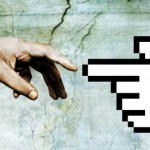 Call for Papers Networked Images. Artistic Practices Before and After the Internet Workshop In their anthology « Mass Effect. Art and the Internet in the Twenty-First Century » (2015) the editors Lauren Cornell and Ed Halter describe the internet as a « true mass medium » which has fundamentally changed every form of cultural activity. Art is no exception; its conception, production and distribution are seen as determined by the new digital technology. Much current debate revolves around whether artistic practices involving the internet allow for a critical perspective on this inevitable immanence. David Joselit maintains that contemporary positions that are in digital conjunction with the material they use are completely integrated into the networks of today’s communications cycles (2012). Accordingly, . . . → En lire plus Call for Papers Networked Images. Artistic Practices Before and After the Internet Workshop In their anthology « Mass Effect. Art and the Internet in the Twenty-First Century » (2015) the editors Lauren Cornell and Ed Halter describe the internet as a « true mass medium » which has fundamentally changed every form of cultural activity. Art is no exception; its conception, production and distribution are seen as determined by the new digital technology. Much current debate revolves around whether artistic practices involving the internet allow for a critical perspective on this inevitable immanence. David Joselit maintains that contemporary positions that are in digital conjunction with the material they use are completely integrated into the networks of today’s communications cycles (2012). Accordingly, . . . → En lire plus
Posté par Sébastien Bontemps, le 8 février 2016;
- Date limite : 19 juin 2016
- Date et lieu du colloque : 27-29 avril 2017, Vienne, Université des Arts Appliqués
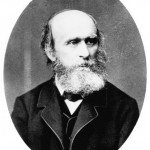 Rudolf von Eitelberger (1817–1885) A Conference on the Occasion of his Two-Hundredth Birthday (Vienna, 27–29 April 2017) Rudolf von Eitelberger stands at the inception of many institutions and initiatives: he held the first professorship of art history at the University of Vienna (1852); he was the driving force and founding director of the first museum of applied arts outside England (1863), and of the affiliated school of applied art (1867); he inaugurated the Quellenschriften für Kunstgeschichte und Kunsttechnik des Mittelalters und der Neuzeit (1871) and, lastly, he was closely associated with early conservation efforts in the Danube Monarchy (Central-Commission zur Erforschung und Erhaltung der Baudenkmale). It would be safe to say that Eitelberger occupied a pivotal position at the confluence of . . . → En lire plus Rudolf von Eitelberger (1817–1885) A Conference on the Occasion of his Two-Hundredth Birthday (Vienna, 27–29 April 2017) Rudolf von Eitelberger stands at the inception of many institutions and initiatives: he held the first professorship of art history at the University of Vienna (1852); he was the driving force and founding director of the first museum of applied arts outside England (1863), and of the affiliated school of applied art (1867); he inaugurated the Quellenschriften für Kunstgeschichte und Kunsttechnik des Mittelalters und der Neuzeit (1871) and, lastly, he was closely associated with early conservation efforts in the Danube Monarchy (Central-Commission zur Erforschung und Erhaltung der Baudenkmale). It would be safe to say that Eitelberger occupied a pivotal position at the confluence of . . . → En lire plus
Posté par Sébastien Bontemps, le 28 janvier 2016;
- Date limite : 1er mars 2016
- Date et lieu : 8-9 juillet 2016, Berlin
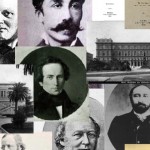 Art History for Artists (Berlin, 8-9 Jul 2016) Berlin, TU, July 8 – 09, 2016 Deadline: Mar 1, 2016 Art history for artists: interactions between scholarly discourse and artistic practice in the 19th century International Conference TU Berlin, July 8-9, 2016 Call for Papers Deadline for submissions: March 1, 2016 The conference seeks to examine the shaping of art history as a discipline during the 19th century in relation to artistic training and exchanges between artists and scholars. The development of art history has been associated with an array of socio-political and economic factors such as the formation of a bourgeois public, the politics of national identity and state legitimacy or the needs of an expanding art market. This conference aspires . . . → En lire plus Art History for Artists (Berlin, 8-9 Jul 2016) Berlin, TU, July 8 – 09, 2016 Deadline: Mar 1, 2016 Art history for artists: interactions between scholarly discourse and artistic practice in the 19th century International Conference TU Berlin, July 8-9, 2016 Call for Papers Deadline for submissions: March 1, 2016 The conference seeks to examine the shaping of art history as a discipline during the 19th century in relation to artistic training and exchanges between artists and scholars. The development of art history has been associated with an array of socio-political and economic factors such as the formation of a bourgeois public, the politics of national identity and state legitimacy or the needs of an expanding art market. This conference aspires . . . → En lire plus
Posté par Sébastien Bontemps, le 27 janvier 2016;
- Date limite : 1er mars 2016
 Netherlands Yearbook for History of Art, Vol. 67 : Netherlandish Sculpture of the 16th Century Netherlands Yearbook for History of Art, Vol. 67 : Netherlandish Sculpture of the 16th Century
Sculpture was one of the principal arts in the Low Countries during the 16th century, an important vehicle for supporting the interests of the nobility and the church in particular. The period saw the transition from a ‘Gothic’ to an ‘antique’ artistic mode, a transformation in which sculpture assumed a leading role. Throughout the century, Netherlandish sculpture was a prestigious and favored export product—from carved oak altarpieces to alabaster reliefs, brass epitaphs, and huisaltaren – while at the same time many sculptors from the Low Countries travelled extensively through Europe.
Until quite recently, surveys of early modern art in Northern Europe rarely included much sculpture. Only . . . → En lire plus
Posté par Sébastien Bontemps, le 25 janvier 2016;
- Date limite : 15 mars 2016
- Date et lieu : 25 mai 2016, Rome, Bibliothèque Hertziana
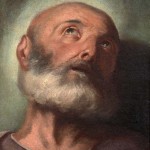 Pittori lucchesi del Seicento a Roma (Roma, 25 May 16) Rom, Bibliotheca Hertziana, Max-Planck-Institut für Kunstgeschichte, May 25, 2016 Deadline: Mar 15, 2016 Call for Papers: Pittori lucchesi del Seicento a Roma Workshop a cura di Stefan Albl (Bibliotheca Hertziana, Istituto Max Planck per la storia dell’arte), Michele Nicolaci (Sapienza Università di Roma) A vent’anni dalla storica mostra ideata e curata da Clara Baracchini e Maria Teresa Filieri (Pittura a Lucca nel primo Seicento, Lucca 1994) e del fondamentale studio di Roberto Paolo Ciardi (Lucca a Roma v/s Lucca e Roma. Intersezioni tra cultura locale e grandi modelli figurativi) la giornata di studi intende promuovere e aggiornare le conoscenze sulle presenze degli artisti lucchesi a Roma nel corso del XVII secolo. . . . → En lire plus Pittori lucchesi del Seicento a Roma (Roma, 25 May 16) Rom, Bibliotheca Hertziana, Max-Planck-Institut für Kunstgeschichte, May 25, 2016 Deadline: Mar 15, 2016 Call for Papers: Pittori lucchesi del Seicento a Roma Workshop a cura di Stefan Albl (Bibliotheca Hertziana, Istituto Max Planck per la storia dell’arte), Michele Nicolaci (Sapienza Università di Roma) A vent’anni dalla storica mostra ideata e curata da Clara Baracchini e Maria Teresa Filieri (Pittura a Lucca nel primo Seicento, Lucca 1994) e del fondamentale studio di Roberto Paolo Ciardi (Lucca a Roma v/s Lucca e Roma. Intersezioni tra cultura locale e grandi modelli figurativi) la giornata di studi intende promuovere e aggiornare le conoscenze sulle presenze degli artisti lucchesi a Roma nel corso del XVII secolo. . . . → En lire plus
Posté par Sébastien Bontemps, le 25 janvier 2016;
- Date limite : 16 mars 2016
- Date et lieu : Septembre 2016 - Avril 2017, Hambourg, Tapei
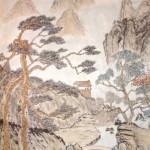 Memorial landscapes (Hamburg/Taipei, Sep 16-Apr 17) Hamburg / Taipei, September 26 – 30, 2016 Deadline: Mar 10, 2016 Memorial landscapes World images East and West International Warburg Seminar, Hamburg University / Aby Warburg Foundation, Hamburg, in cooperation with National Taiwan Normal University and National Taiwan University, Taipei The 2016-2017 International Warburg Seminar, to be held in Taipei on 26-30 September 2016 and in Hamburg on 3-7 April 2017 and aimed at doctoral candidates and young academics, will be devoted to comparative views of the landscape genre. People’s perception of their surrounding landscape is subject to a variety of cultural encodings. This becomes particularly clear when international comparisons are made – between, say, Eastern and Western conceptions of landscape. Whereas in the . . . → En lire plus Memorial landscapes (Hamburg/Taipei, Sep 16-Apr 17) Hamburg / Taipei, September 26 – 30, 2016 Deadline: Mar 10, 2016 Memorial landscapes World images East and West International Warburg Seminar, Hamburg University / Aby Warburg Foundation, Hamburg, in cooperation with National Taiwan Normal University and National Taiwan University, Taipei The 2016-2017 International Warburg Seminar, to be held in Taipei on 26-30 September 2016 and in Hamburg on 3-7 April 2017 and aimed at doctoral candidates and young academics, will be devoted to comparative views of the landscape genre. People’s perception of their surrounding landscape is subject to a variety of cultural encodings. This becomes particularly clear when international comparisons are made – between, say, Eastern and Western conceptions of landscape. Whereas in the . . . → En lire plus
|
Équipe Rédacteur en chef : Olivier Bonfait.
Rédacteurs : Elliot Adam (Moyen Age) ; Nicolas Ballet (XX-XXIe siècles) ; Matthieu Fantoni (musées) ; Antonella Fenech Kroke (bourses) ; Vladimir Nestorov (Lettre mensuelle)
Administrateur web : Matthieu Lett.
ancien éditeur : Pascale Dubus
anciens rédacteurs : Gautier Anceau, Sébastien Bontemps, Damien Bril ; Sébastien Chauffour ; Ludovic Jouvet ; Aude Prigot
|
 The Ethics of Photography (Iași, 19-20 May 16) Iași, Romania, May 19 – 20, 2016 Centrul de Fotografie Contemporana (Centre of Contemporary Photography) in Iasi (RO) is organizing the conference ‘’The Ethics of Photography and the Politics of the Image in Times of Crises’ in the framework of ‘CAMERA PLUS. Biennial of Contemporary Photography and Moving Image’. Venue: ‘Benjamin Fondane’ Hall at the French Institute, Iași (Romania). Argument: In the last years, striated by a multitude of crises — economical, political and cultural crises —, the photographic practices have created ethical tensions and they have been politicized out of a necessity to speculate the opportunity of transforming the reality. The financial, governmental and axiological objectivities came to be reconsidered by narrative . . . → En lire plus
The Ethics of Photography (Iași, 19-20 May 16) Iași, Romania, May 19 – 20, 2016 Centrul de Fotografie Contemporana (Centre of Contemporary Photography) in Iasi (RO) is organizing the conference ‘’The Ethics of Photography and the Politics of the Image in Times of Crises’ in the framework of ‘CAMERA PLUS. Biennial of Contemporary Photography and Moving Image’. Venue: ‘Benjamin Fondane’ Hall at the French Institute, Iași (Romania). Argument: In the last years, striated by a multitude of crises — economical, political and cultural crises —, the photographic practices have created ethical tensions and they have been politicized out of a necessity to speculate the opportunity of transforming the reality. The financial, governmental and axiological objectivities came to be reconsidered by narrative . . . → En lire plus


















